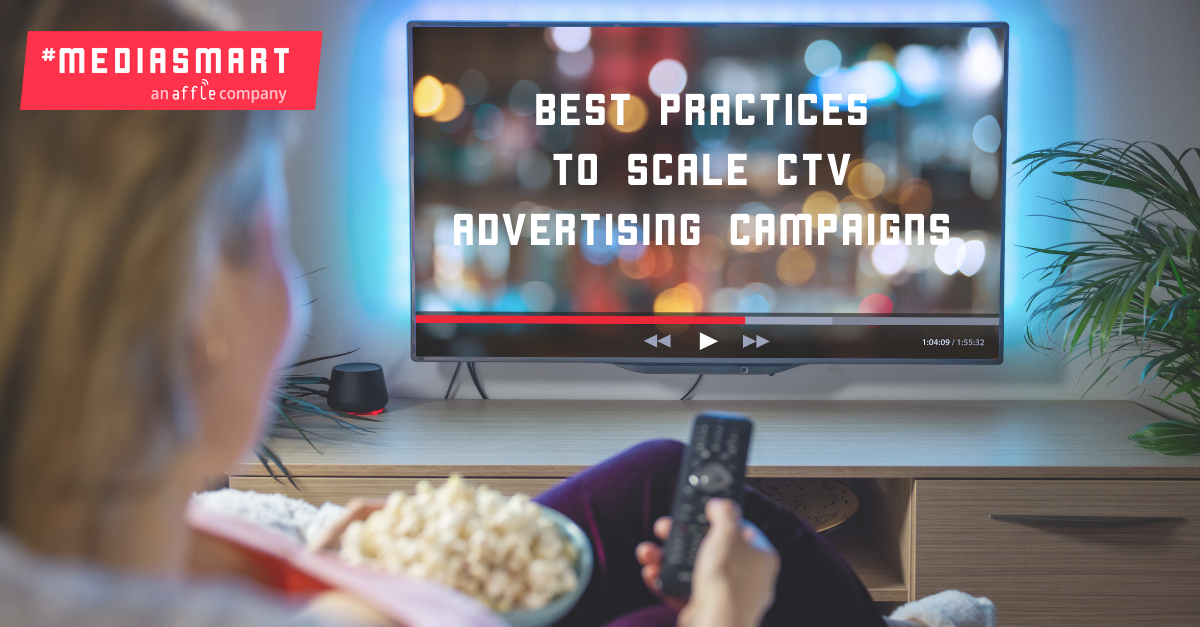Blog
Announcements, analysis and opinions on industry trends around the mobile programmatic world.

Subscribe now, and receive the latest programmatic content directly on your inbox!
Thank you for subscribing to our newsletter
Gone are the days when televisions were used for mass marketing wherein multiple ads were bombarded to the customers with the hope of them purchasing the product. The audience metrics were unreachable to the advertisers. Time-based pricing was the most prominent media buying strategy followed in those times. If a user changes the channel in the middle of the ad campaign, there is no way to measure the drop rate.
Fast forward to the present, enter Connected TV (CTV) with quantifiable metrics where audiences present in the digital space hold prominence. Targeting the right user, suppressing certain devices and retargeting some of your users are the most important benefits of digital television. Marketers have control and transparency over their ad campaigns around targeting and measurement by showing consumers the ad that is relevant and not generic.
CTV – an integration of internet and web 2.0 features in a television setup.
It is expected that by 2023, 82% of American households will be using CTVs and 44% will even cut linear TV altogether. The estimation is that by the end of 2021 almost 30% of CTV viewing households in the US will be cord-cutters, according to BusinessWire. Other countries seem to follow that path. Take India where, according to Mordor Intelligence, the smart TV and OTT market is projected to grow at a Compound Annual Growth Rate (CAGR) of 5% from 2021 to 2026.
As the CTV market expands, it is important to understand that it comes with its own set of quirks. Buying CTV, although far easier and cheaper than buying traditional TV, is not as simple as buying a display on desktop or mobile. The following best practices will expand the knowledge on how to achieve outstanding CTV campaigns.
Set measurable KPIs to excel
Advertisers should define goals and KPIs before running any CTV ads. Remember you do not want your customer to feel disconnected at any stage, spend ad expenditure on the right target audience and know the right platform to strategize and build each ad. Reach your goals and optimize on ROAS (Return on Ad Spend) to put in context the right ad campaign plan.
If you are serving a video, you can use mediasmart’s tracking system to know how much of the video was actually watched and then optimize your marketing strategy accordingly. You might want to show a second ad from the same campaign to those that watched the first commercial fully with an ad sequence that increases brand recognition in a creative way, or serve the ad again to those that didn’t fully watch it - maybe watching only 25% of the ad - with retargeting strategies. The options are as many and as varied as to match the wildest imagination. Setting the campaign goals accordingly - be it a number of impressions served, a number of video completions, lead generation on a CTV campaign synced with mobile - and checking the correct KPIs to implement ongoing strategies (be it within the same campaign or future ones) is a blessing for marketers.
Avoid or Enforce multiple ads served to a single device
If your aim is to generate brand awareness by repetition of your ad, CTV allows retargeting strategies. Independently of the show that is being watched or the time of the day, advertisers are now able to impact the same device twice, thrice or as many times as they deem right. Not being limited to expecting the same audience watching the same show to impact them again is indeed one of the many advantages CTV has over traditional, linear TV.
Addressing the duplication of the same ad being served to the same user can be done programmatically by setting frequency controls. This is also referred to as frequency capping. Connected TV, and particularly when paired with Household sync, allows you to control not only the frequency in which your ads are being served on the CTV but also on mobile screens like smartphones and tablets. This more sophisticated way of media mixing will result in less media wastage and less saturation for the end-users.
Household sync technology and Connected TV
CTV opened up a whole range of possibilities for advertisers. We, at mediasmart, are aware of the opportunity we developed Household sync technology. This innovation allows users not only to watch ads on their CTV but also to interact with paired or complementary ads on their mobile devices. Thus, amplifying product or service awareness via storytelling on CTV, engaging and interacting within the mobile environment and measuring and optimizing thanks to programmatic media buying.
To ace household syncing, one needs to balance the budgets allocated to each of the mediums. You should select a budget percentage for your strategies on CTV versus synced devices considering that CPM for CTV will be up to 4 to 5 times higher than on mobile. Check this article to learn more about how to sync CTV campaigns with mobile ads like a pro.
Conclusion
It is, therefore, important for brands doing Connected TV (CTV) advertising to measure success with specific KPI. Know what you want to focus upon and then, move in that direction. Undoubtedly, there are more subjects that will affect your CTV campaigns results, such as inventory, pricing or creatives used…
We have prepared this CTV Best practices roundup if you want to delve into the subject more extensively. All in all, a good CTV advertising approach will enable maximum reach, use precise measurement, and make the most out of frequency management to result in better customer experiences.
Topics: connected tv


